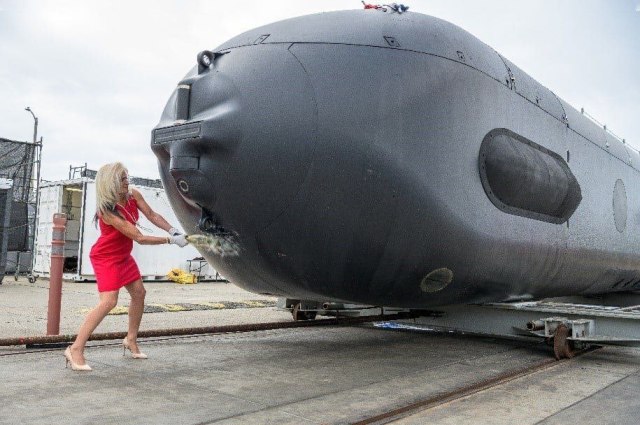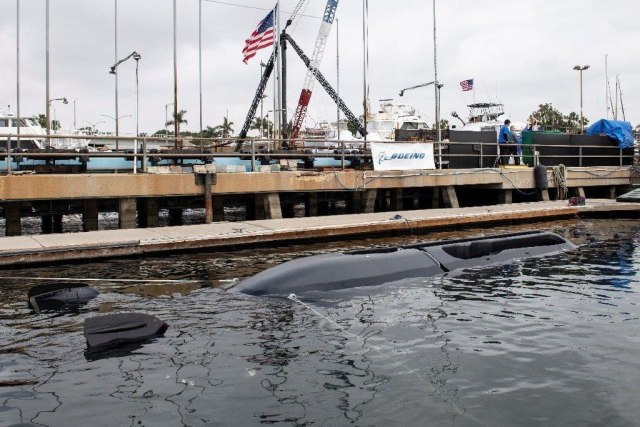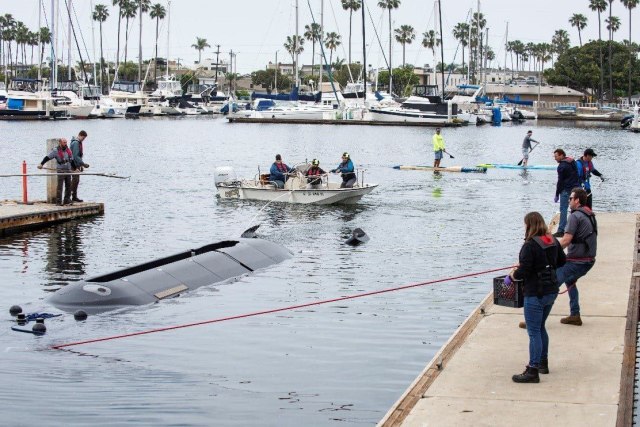U.S. Navy Marine Systems Command (NAVSEA) May 6, 2022 =AZUYWKkMoY1Y5dOzILjfe7cIfAoBCb1QEVDc9uBT5JxgHVKiM6GbisRY1rKf5eriiPUnmDNXXdDDz0lR73XYiiEiepC9f0LNrcQOIMicrtkPwMs2OijyDOpf_81ymMWbiUOFPhzqUuj4tkMScFcXx5UK&__tn__=%2CO%2CP-R]сообщило On April 28, baptismal ceremonies and launching of the first prototype of a promising large autonomous uninhabited underwater were held on the Pacific Coast of the United States in Huntington Beach (California). Orca XLUUV (Extra Large Unmanned Undersea Vehicle). The device was designed and built for the US Navy under the head role of Boeing Corporation, the subcontractor in the construction was the shipbuilding corporation Huntington Ingalls Industries (HII).

The ceremony of the baptism and launching of the first prototype of the promising large autonomous uninhabited underwater vehicle Orca XLUUV (Extra Large Unmanned Undersea Vehicle), designed and built for the US Navy with the head role of Boeing Corporation. Huntington Beach (California), 04/28/2022 (c) Boeing
The development of a promising large autonomous uninhabited underwater vehicle Orca, capable of autonomous stay at sea for up to several months, was launched in September 2017, when the US Navy concluded on a competitive basis relevant contracts for the development of draft projects under the XLUUV program in the amount of about $ 40 million each with Boeing (acting in partnership with HII) and with Lockheed Martin Corporation. In February-May 2019, the US Navy selected the Boeing project based on the earlier experimental underwater vehicle Echo Voyager, and signed contracts with the Boeing and HII consortium worth $ 43 million for the development of a technical project and $ 274.4 million for the construction of five Orca XLUUV prototypes by the end of 2022. However, apparently, in fact, the program for the construction of prototypes is going with some delay. The construction of prototypes of the devices is carried out at the production site of the Boeing division created in Huntington Beach for promising, research and secret projects of Boeing Phantom Works, during the manufacture of hull structures at HHI.
Orca is a modular device with a reconfigurable payload compartment with a length of 10 m and a capacity of 8 tons. The device itself has a total length of 26 m. The device is equipped with a diesel-electric power plant with full electric propulsion and lithium-ion batteries, with charging batteries from diesel generators when running in a surface position (actually under the RDP device). The maximum speed of the underwater course is 8 knots, although the typical operational speed is about 3 knots, at which the Orca should have a cruising range of up to 6,500 miles with several months of autonomy.
In 2019, the then head of the US Navy's Unmanned Marine Systems (PMS 406) programs, Captain Pete Small, announced that the Orca program would initially focus on the development of the concept of operations (CONOPS) and work on the integration of the payload, primarily for testing mine countermeasures systems. Promising XLUUV capabilities may also include anti-submarine detection, electronic warfare, reconnaissance and surveillance tasks, and then anti-ship and anti-submarine strike capabilities.
The experimental 15.5-meter autonomous underwater vehicle Echo Voyager, which served as a prototype for Orca, was proactively designed and built by Boeing Phantom Works in Huntington Beach with the participation of HHI, and was positioned for both military and civilian applications. Echo Voyager underwent an extensive program of sea trials in 2017-2019.



The ceremony of the baptism and launching of the first prototype of the promising large autonomous uninhabited underwater vehicle Orca XLUUV (Extra Large Unmanned Undersea Vehicle), designed and built for the US Navy with the head role of Boeing Corporation. Huntington Beach (California), 04/28/2022 (c) Boeing
jpg" title="Project image of a promising large autonomous uninhabited underwater vehicle Orca XLUUV (Extra Large Unmanned Undersea Vehicle) for the US Navy">
Project image of a promising large autonomous uninhabited underwater vehicle Orca XLUUV (Extra Large Unmanned Undersea Vehicle) for the US Navy (c) Boeing




